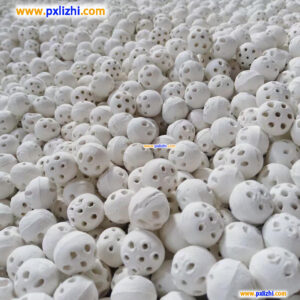
# Alumina Cerical Ball Applications and Properties
## Introduction to Alumina Ceramic Balls
Alumina ceramic balls are high-performance ceramic components made from aluminum oxide (Al₂O₃). These precision-engineered spheres offer exceptional properties that make them valuable across various industrial applications. With their unique combination of hardness, wear resistance, and chemical stability, alumina ceramic balls have become indispensable in many technological fields.
## Key Properties of Alumina Ceramic Balls
### 1. Exceptional Hardness
Alumina ceramic balls rank among the hardest materials available, second only to diamond in some formulations. This property makes them highly resistant to wear and deformation, even under extreme pressure conditions.
### 2. Outstanding Wear Resistance
The wear resistance of alumina balls is approximately 100 times greater than that of steel, ensuring long service life in abrasive environments. This characteristic significantly reduces maintenance costs and downtime in industrial applications.
### 3. Chemical Inertness
Alumina ceramic balls demonstrate remarkable chemical stability, resisting corrosion from acids, alkalis, and organic solvents. This makes them ideal for use in harsh chemical environments where metal components would degrade.
### 4. High Temperature Stability
These ceramic balls maintain their structural integrity at temperatures up to 1600°C (2912°F), making them suitable for high-temperature applications where metals would soften or melt.
### 5. Electrical Insulation Properties
Alumina ceramic balls serve as excellent electrical insulators, with high dielectric strength and low electrical conductivity, valuable in electronic and electrical applications.
## Industrial Applications of Alumina Ceramic Balls
### 1. Bearings and Mechanical Components
Alumina ceramic balls are widely used in precision bearings for high-speed applications, particularly in environments where lubrication is difficult or contamination must be avoided.
### 2. Grinding Media
In the mining and pigment industries, alumina balls serve as grinding media in ball mills, offering superior wear resistance compared to traditional steel balls.
### 3. Valve Components
The chemical resistance of alumina makes these balls ideal for use in valves handling corrosive fluids, particularly in the chemical processing and petroleum industries.
### 4. Semiconductor Manufacturing
The purity and electrical properties of alumina ceramic balls make them valuable in semiconductor manufacturing equipment, where contamination must be minimized.
### 5. Medical Applications
In medical devices and implants, alumina ceramic balls provide biocompatibility and wear resistance, particularly in joint replacements and dental applications.
## Grades and Specifications
Alumina ceramic balls are available in various grades, typically classified by their alumina content:
– 92% Alumina: Good mechanical strength and cost-effectiveness
– 95% Alumina: Improved wear resistance and hardness
– 99% Alumina: Highest purity for demanding applications
– 99.5% Alumina: Ultra-high purity for semiconductor and medical uses
## Manufacturing Process
The production of alumina ceramic balls involves several critical steps:
1. Powder preparation and mixing
2. Forming (isostatic pressing or extrusion)
3. High-temperature sintering (1500-1700°C)
4. Precision grinding and polishing
5. Quality inspection and testing
## Advantages Over Metal Balls
Compared to traditional metal balls, alumina ceramic balls offer:
– Longer service life in abrasive environments
– Reduced maintenance requirements
– Lower energy consumption in rotating applications
– Non-magnetic properties
– Resistance to seizure and galling
– Lighter weight (about 60% of steel)
## Quality Considerations
When selecting alumina ceramic balls, important quality factors include:
– Surface finish (typically <0.2 μm Ra for precision applications)
– Sphericity (deviation from perfect roundness)
– Size consistency
– Microstructure density
Keyword: alumina ceramic ball
– Absence of surface defects
## Future Developments
Ongoing research in alumina ceramic technology focuses on:
– Nanostructured alumina for improved toughness
– Composite formulations with enhanced properties
– Advanced manufacturing techniques for greater precision
– New applications in energy storage and conversion